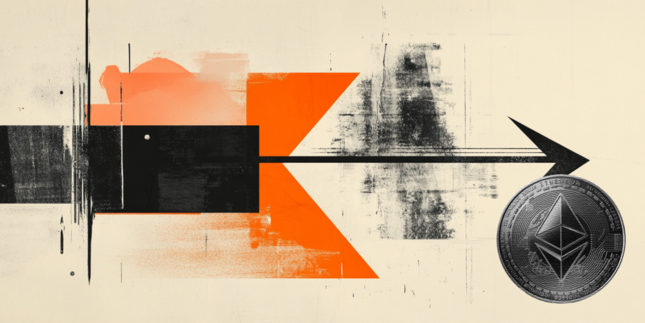- The Canadian Dollar is falling back for the second day in a row as markets shy away from risk.
- BoC sees a period of negative growth over the horizon.
- Despite a weakening economy, BoC is hampered on policy by increasing inflation risks.
- USD/CAD reaches seven-month high on Wednesday.
The Canadian Dollar (CAD) is down once again on Wednesday, adding to yesterday’s declines and sending the USD/CAD back into the 1.2800 handle as the Bank of Canada (BoC) holds rates steady as markets broadly expected.
The Bank of Canada (BoC) held its main reference rate at 5.0% Wednesday morning like Wall Street broadly predicted, but dovish comments from BoC Governor Tiff Macklem are failing to spark much confidence in the Loonie.
The BoC is expecting “two or three quarters” of negative growth as a recession looms over the Canadian economy, with Governor Macklem specifically noting that odds of achieving a soft landing are beginning to decrease.
Broad-market risk aversion is the name of the game as Tuesday’s risk-off flows continue for a second day, sending the US Dollar (USD) higher. Crude Oil prices, however, are finding a floor for Wednesday, helping to limit losses for the oil-backed CAD.
Daily Digest Market Movers: Canadian Dollar knocking back as investors favor Dollar Index, BoC fails to inspire
- BoC to maintain policy rates for the time being, period of negative growth expected.
- BoC Governor Macklem warns that too much government spending will not help curtail inflation.
- The gap is closing on achieving a soft landing, according to BoC.
- Despite risks, BoC doesn’t see a “deep recession” yet.
- Crude Oil prices are strung in the middle, helping to backstop the Loonie slide.
- Middle East geopolitical tensions keeping barrels well-bid, despite a surprise build-up of US Crude Oil reserves.
- Energy Information Administration (EIA) barrel counts recorded an unexpected 1.371M rebound in US oil stocks.
- The USD/CAD is set to spend the rest of the week reacting to US economic data. Gross Domestic Product (GDP) and Personal Consumption Expenditure (PCE) figures are still on the cards for Thursday and Friday, respectively.
- Tiff Macklem speaks on policy outlook after BoC leaves policy rate unchanged at 5%
Technical Analysis: USD/CAD teases 1.3810, pinned to the high side for Wednesday
The Canadian Dollar (CAD) is extending the week’s risk-off backslide as traders return toward the US Dollar (USD), with the BoC’s showing briefly sending the USD/CAD into 1.3810 on reaction.
The Loonie-Dollar pairing is treading water just beneath the 1.3800 handle, and Tuesday’s topside push extends yesterday’s rebound from the 200-hour Simple Moving Average (SMA). USD/CAD has hit a fresh seven-month high.
On the daily candlesticks, USD/CAD continues to push higher, bolstered by a rising 50-day SMA pushing into 1.3600 on the chart paper. The floor on any bearish corrections is priced in from the 200-day SMA near 1.3475.
The immediate ceiling on a bullish continuation sits at early March’s peak of 1.3861, and a break of this level would set a new high for the year on the USD/CAD as the Loonie waffles.
Canadian Dollar FAQs
What key factors drive the Canadian Dollar?
The key factors driving the Canadian Dollar (CAD) are the level of interest rates set by the Bank of Canada (BoC), the price of Oil, Canada’s largest export, the health of its economy, inflation and the Trade Balance, which is the difference between the value of Canada’s exports versus its imports. Other factors include market sentiment – whether investors are taking on more risky assets (risk-on) or seeking safe-havens (risk-off) – with risk-on being CAD-positive. As its largest trading partner, the health of the US economy is also a key factor influencing the Canadian Dollar.
How do the decisions of the Bank of Canada impact the Canadian Dollar?
The Bank of Canada (BoC) has a significant influence on the Canadian Dollar by setting the level of interest rates that banks can lend to one another. This influences the level of interest rates for everyone. The main goal of the BoC is to maintain inflation at 1-3% by adjusting interest rates up or down. Relatively higher interest rates tend to be positive for the CAD. The Bank of Canada can also use quantitative easing and tightening to influence credit conditions, with the former CAD-negative and the latter CAD-positive.
How does the price of Oil impact the Canadian Dollar?
The price of Oil is a key factor impacting the value of the Canadian Dollar. Petroleum is Canada’s biggest export, so Oil price tends to have an immediate impact on the CAD value. Generally, if Oil price rises CAD also goes up, as aggregate demand for the currency increases. The opposite is the case if the price of Oil falls. Higher Oil prices also tend to result in a greater likelihood of a positive Trade Balance, which is also supportive of the CAD.
How does inflation data impact the value of the Canadian Dollar?
While inflation had always traditionally been thought of as a negative factor for a currency since it lowers the value of money, the opposite has actually been the case in modern times with the relaxation of cross-border capital controls. Higher inflation tends to lead central banks to put up interest rates which attracts more capital inflows from global investors seeking a lucrative place to keep their money. This increases demand for the local currency, which in Canada’s case is the Canadian Dollar.
How does economic data influence the value of the Canadian Dollar?
Macroeconomic data releases gauge the health of the economy and can have an impact on the Canadian Dollar. Indicators such as GDP, Manufacturing and Services PMIs, employment, and consumer sentiment surveys can all influence the direction of the CAD. A strong economy is good for the Canadian Dollar. Not only does it attract more foreign investment but it may encourage the Bank of Canada to put up interest rates, leading to a stronger currency. If economic data is weak, however, the CAD is likely to fall.
Information on these pages contains forward-looking statements that involve risks and uncertainties. Markets and instruments profiled on this page are for informational purposes only and should not in any way come across as a recommendation to buy or sell in these assets. You should do your own thorough research before making any investment decisions. FXStreet does not in any way guarantee that this information is free from mistakes, errors, or material misstatements. It also does not guarantee that this information is of a timely nature. Investing in Open Markets involves a great deal of risk, including the loss of all or a portion of your investment, as well as emotional distress. All risks, losses and costs associated with investing, including total loss of principal, are your responsibility. The views and opinions expressed in this article are those of the authors and do not necessarily reflect the official policy or position of FXStreet nor its advertisers. The author will not be held responsible for information that is found at the end of links posted on this page.
If not otherwise explicitly mentioned in the body of the article, at the time of writing, the author has no position in any stock mentioned in this article and no business relationship with any company mentioned. The author has not received compensation for writing this article, other than from FXStreet.
FXStreet and the author do not provide personalized recommendations. The author makes no representations as to the accuracy, completeness, or suitability of this information. FXStreet and the author will not be liable for any errors, omissions or any losses, injuries or damages arising from this information and its display or use. Errors and omissions excepted.
The author and FXStreet are not registered investment advisors and nothing in this article is intended to be investment advice.
Recommended content
Editors’ Picks

EUR/USD bounces off lows, retests 1.1370
Following an early drop to the vicinity of 1.1310, EUR/USD now manages to regain pace and retargets the 1.1370-1.1380 band on the back of a tepid knee-jerk in the US Dollar, always amid growing optimism over a potential de-escalation in the US-China trade war.

GBP/USD trades slightly on the defensive in the low-1.3300s
GBP/USD remains under a mild selling pressure just above 1.3300 on Friday, despite firmer-than-expected UK Retail Sales. The pair is weighed down by a renewed buying interest in the Greenback, bolstered by fresh headlines suggesting a softening in the rhetoric surrounding the US-China trade conflict.

Gold remains offered below $3,300
Gold reversed Thursday’s rebound and slipped toward the $3,260 area per troy ounce at the end of the week in response to further improvement in the market sentiment, which was in turn underpinned by hopes of positive developments around the US-China trade crisis.

Ethereum: Accumulation addresses grab 1.11 million ETH as bullish momentum rises
Ethereum saw a 1% decline on Friday as sellers dominated exchange activity in the past 24 hours. Despite the recent selling, increased inflows into accumulation addresses and declining net taker volume show a gradual return of bullish momentum.

Week ahead: US GDP, inflation and jobs in focus amid tariff mess – BoJ meets
Barrage of US data to shed light on US economy as tariff war heats up. GDP, PCE inflation and nonfarm payrolls reports to headline the week. Bank of Japan to hold rates but may downgrade growth outlook. Eurozone and Australian CPI also on the agenda, Canadians go to the polls.

The Best brokers to trade EUR/USD
SPONSORED Discover the top brokers for trading EUR/USD in 2025. Our list features brokers with competitive spreads, fast execution, and powerful platforms. Whether you're a beginner or an expert, find the right partner to navigate the dynamic Forex market.


